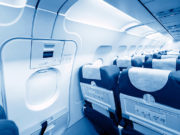
In this issue of AeroSafety World, we dedicated two articles (“Getting Out” and “Marching Orders”) to provisions contained in the FAA Reauthorization Act of 2018, a piece of legislation recently passed by both houses of the U.S. Congress and signed into law by President Trump. The measure authorizes funding for the Federal Aviation Administration (FAA) for five years and includes dozens of safety- and non-safety-related directives for FAA, the Department of Transportation and the National Transportation Safety Board.
Flight Safety Foundation is an international organization and we try not to focus too much on the United States despite the fact that we were founded in New York and our main office is located just outside Washington. But five-year funding bills don’t get approved very often, and when one is signed into law, it is worth some attention.
The measure also is significant because, if you can manage to get through its 462 pages, you can get a good sense of what’s considered important in one of the largest single aviation markets in the world. And because of its size and complexity relative to other markets, what happens with aviation in the United States often has an impact internationally.
So, what are U.S. lawmakers, industry stakeholders, trade associations, lobbying groups, labor organizations and other stakeholders focused on? Unmanned aircraft systems, also commonly referred to as drones, get a lot of ink in the FAA measure, as do airport improvements, airport noise, air service improvements and disaster recovery.
From a purely safety perspective, the measure covers, among other things, cabin evacuation, the integration of drones in the National Airspace System, the carriage of lithium battery–powered electronic devices, duty/rest periods for flight attendants, engine safety, accident and incident data, post-accident access to flight data and cockpit voice recordings, aircraft air quality, reporting incidents of in-flight sexual misconduct, the effectiveness of FAA’s Compliance Philosophy and the conspicuity needs for airside surface vehicles at air carrier airports.
There also continue to be references, direct and indirect, to, and ramifications from, the Sept. 11, 2001, terrorist attacks on the World Trade Center (WTC) in New York and the Pentagon outside Washington. A provision in the measure requiring secondary cockpit barriers on airliners is named after the pilot of one of the planes that was crashed into the WTC. In addition, there is a “sense of Congress” statement that the FAA administrator “should collaborate with other aviation authorities to advance a global standard for access to air carrier flight decks and redundancy requirements consistent with the flight deck access and redundancy requirements in the United States.”
I personally am gratified that Congress was able to reach agreement on the bill and that it sets up stable funding for the next five years because FAA has a lot of work in front of it.
